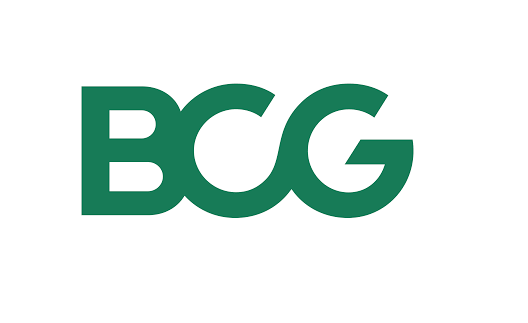Fast Adaptation to the Pandemic and a consumer shift towards online payments fuel expectations, but players must move now to seize growth opportunities, says new report by Boston Consulting Group (BCG).
Global payments revenues declined by only 2.5% from 2019 to 2020. The current value which stands at $1.5 trillion could reach $2.9 trillion by 2030.
Experts say that all regions are likely to see growth over the next five years, with Africa having a compound annual growth rate (CAGR) at 6.9%.
Asia-Pacific continues to lead the way with a compound annual growth rate (CAGR) of 8.8% from 2020 to 2025, followed by Latin America at 8.3%, Middle East and North America at 5.8%, and Europe at 5.3%.
The report by Boston Consulting Group (BCG) released recently says that the payments industry suffered a mild impact from the COVID-19 crisis and has returned to growth with renewed momentum.
The report, titled Global Payments 2021: All in for Growth, is the 19th annual analysis by BCG of the global payments industry and reports that the sector responded quickly to challenges posed by the pandemic – from e-commerce enablement to accelerating cash-to-noncash conversion.
READ ALSO: FEC Okays N47bn Aviation, Customs Works Projects
“The payments industry was an enabler of economic recovery during the COVID-19 crisis” said Yann Sénant, a Paris-based BCG managing director and senior partner, coauthor of the report, and global leader of BCG’s payments and transaction banking segment.
“But meeting the challenges raised by the pandemic has opened the gates to a wave of innovation that will see new players entering the space in greater numbers and raising the competitive stakes.
The winners over the next five years will be the industry participants who move quickly to adapt to the new landscape, by seizing these new partnerships and revenue opportunities.”
The report identifies a number of global trends that are likely to dominate the payments sector in the coming years.
For example, digital ecosystems and specialized software solutions are likely to play a growing role in the industry, as integrated software vendors, Big tech players, and fintechs enter the space and as banks increase their engagement.
A wave of industry consolidation and mergers and acquisitions will accompany this trend.
Digital currency activity is likely to pick up pace with the possible launch of more central bank digital currencies.
Speaking on the digital currency, Tolu Oyekan, Partner, BCG, Lagos said it was laudable that Nigeria will be one of the few African countries that is exploring the possibility of issuing a domestic Central Bank Digital Currency (CBDC) with the launch of the eNaira.
He said: “Digital currency is a more robust, efficient and regulated payment offer, it has the potential of enabling a safe financial system by significantly reducing liquidity and credit risk inherent in the traditional payment systems.
The effective implementation of the Nigeria digital currency eNaira could enable faster economic growth, drive cross border payments and remittances which will in turn reduce the demand for forex and consequently the exchange rate”, he said.
Oyekan also stated that digital currency can improve financial inclusion.
Another global trend the report identifies is merchant acquisition, which it believes will remain the fastest-growing area in the sector.
After a low of just 2.2% growth from 2019 to 2020, it is expected to return to an annual CAGR of 11.3% over the next five years, close its pre-pandemic average rate of 11.8% from 2015 to 2019.
However, a boom in e-commerce is expected to dwarf physical point-of-sale transactions growth. These dynamics should lead to increasing cutting out middlemen.
This is because of integrated software vendors and online marketplaces where consumers are able to pay for goods and services on their platforms.
Issuers and networks are trends that are expected to deliver strong performance, with issuing revenues in position to grow by 7.6% and networks by 11.4% from 2020 to 2025, close to the CAGRs of 9.4% and 11.2%, respectively, in the five years prior to the pandemic.
Potential headwinds in this area include the proliferation of noncard payments options—notably the success of “Buy now, pay later”—and a greater push by integrated software vendors and fintechs to partner with next-generation card processors on card opportunities.
Although the wholesale payments revenue pool dropped by $22 billion between 2019 and 2020, owing to low-interest rates and a decline in business spending, the recovery of this global trend is likely to be quick, with 6.6% growth likely until 2025.
However, the wholesale payments environment continues to be challenging, as incumbents and non-traditional players alike show increasing ambition in the sector, and as digital B2B and B2B2C platforms proliferate across all industries.
In addition, corporate customers are increasingly demanding streamlined banking and payments services, analytical insights, and seamless data integration into corporate management systems.
The Fintech is another likely dominant global trend. Over the last two decades, there has been strong growth by fintechs in the banking sector.
Experts at BCG advise that fintechs must refine strategies to capture growth in an increasingly crowded space and develop elements such as people organization, compliance, and risk management functions.
“The payments ecosystem is in flux, and this offers tremendous growth opportunities to companies that are prepared to act fast,” said Markus Ampenberger, a Munich-based BCG partner and associate director, and coauthor of the report.
“Now is the time to gain long-term advantage through bold and strategic action.”
A copy of the report can be downloaded here.














